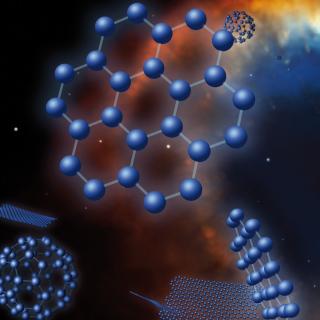Karinkuzhi, D.; Van Eck, S.; Jorissen, A.; Goriely, S.; Siess, L.; Merle, T.; Escorza, A.; Van der Swaelmen, M.; Boffin, H. M. J.; Masseron, T.; Shetye, S.; Plez, B.
Bibliographical reference
Astronomy and Astrophysics, Volume 618, id.A32, 25 pp.
Advertised on:
10
2018
Journal
Citations
42
Refereed citations
39
Description
Context. Barium stars are s-process enriched giants. They owe their
chemical peculiarities to a past mass transfer phase. During this phase
they were polluted by their binary companion, which at the time was an
asymptotic giant branch (AGB) star, but is now an extinct white dwarf.
Barium stars are thus ideal targets for understanding and constraining
the s-process in low- and intermediate-mass AGB stars. Aims: We
derive the abundances of a large number of heavy elements in order to
shed light on the conditions of operation of the neutron source
responsible for the production of s-elements in the former companions of
the barium stars. Methods: Adopting a recently used methodology,
we analyse a sample of eighteen highly enriched barium stars observed
with the high-resolution HERMES spectrograph mounted on the Mercator
telescope (La Palma). We determine the stellar parameters and abundances
using MARCS model atmospheres. In particular, we derive the Nb-Zr ratio
which was previously shown to be a sensitive thermometer for the
s-process nucleosynthesis. Indeed, in barium stars, 93Zr has
fully decayed into mono-isotopic 93Nb, so Nb/Zr is a measure
of the temperature-sensitive 93Zr/Zr isotopic ratio.
Results: HD 28159, previously classified as K5III and
initially selected to serve as a reference cool K star for our abundance
analysis, turns out to be enriched in s-process elements, and as such is
a new barium star. Four stars are characterised by high nitrogen
abundances, and among those three have high [Nb/Zr] and [hs/ls] ratios.
The derived Zr and Nb abundances provide more accurate constraints on
the s-process neutron source, identified to be 13C(α,
n)16O for barium stars. The comparison with stellar evolution
and nucleosynthesis models shows that the investigated barium stars were
polluted by a low-mass (M ˜ 2 - 3 M⊙) AGB star.
HD 100503 is potentially identified as a high
metallicity analogue of carbon-enhanced metal-poor star enriched in both
r- and s-process elements (CEMP-rs).
Related projects

Nucleosynthesis and molecular processes in the late stages of Stellar Evolution
Low- to intermediate-mass (M < 8 solar masses, Ms) stars represent the majority of stars in the Cosmos. They finish their lives on the Asymptotic Giant Branch (AGB) - just before they form planetary nebulae (PNe) - where they experience complex nucleosynthetic and molecular processes. AGB stars are important contributors to the enrichment of the
Domingo Aníbal
García Hernández